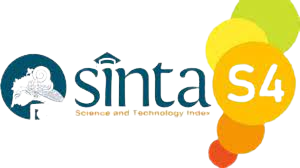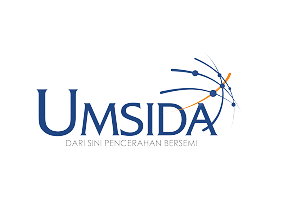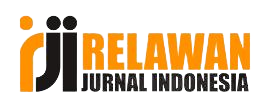Mapping the Internal and External Environments in Empowering Semanggi Batik Craftsmen in Surabaya
Pemetaan Lingkungan Internal - Eksternal Dalam Upaya Pemberdayaan Pengrajin Batik Semanggi Kota Surabaya
DOI:
https://doi.org/10.21070/jkmp.v8i1.725Keywords:
Crafters Empowerment, Batik Semanggi, SWOTAbstract
Batik Semanggi is one of the typical batiks in Surabaya which has economic value for the community. However, the competitiveness of the clover batik business is relatively low. This study aims to identify the internal environmental conditions (strengths-weaknesses) and external (opportunities-threats) of the clover batik craftsmen as the basis for formulating a strategy to increase competitiveness. The study used a qualitative approach with data collection techniques focus group discussions (FGD), semi-structured interviews, observation and document collection. Informants were determined using a purposive method. The data analysis uses interactive models and SWOT analysis. The results showed several strengths that can encourage the floating of clover batik, namely the ability to make a capable batik, iconic distinctive motifs and organic batik technology. The opportunities that arise, namely export opportunities, support of the city government, support of other elements of society, and online marketing opportunities. While weaknesses include the number of craftsmen, low online marketing capabilities, motives not yet registered as intellectual property rights, limited production, and marketing volumes, traditional tools, and low capital. The threat that arises namely, the emergence of other motifs as a competitor batik, and batik printing production that offers cheaper prices with a larger production scale. The map of strengths and weaknesses and threats above are very useful as a material for formulating strategies in empowering clover batik craftsmen.
References
David, F. R. (2014). Analisis SWOT Teknik Membedah Kasus Bisnis (Jakarta: Gramedia Pustaka Utama).
Juardi, M. and Djumadi, D. (2014). Pengembangan Usaha Industri Kecil Melalui Pemberdayaan Masyarakat di Kecamatan Tering Kabupaten Kutai Barat. Jurnal Administrative Reform 2.
Mardikanto, T. (2012). Pemberdayaan Masyarakat dalam Perspektif Kebijakan Publik (Bandung: Alfabeta).
Mayangsari, A. (2015). Dampak Pemberdayaan Pengrajin Batik Oleh Diskoperindag dan ESDM terhadap Peningkatan Kesejahteraan UMKM Batik Jetis Sidoarjo. Jurnal Kebijakan dan Manajemen Publik 3.
Miles, M. B. and Huberman, A. M. (1994). Qualitative Data Analysis: An Expanded Sourcebook (California: SAGE Publication Inc).
Moleong (2012). Metodologi Penelitian Kualitatif (Bandung: Rosda).
Sudantoko, D. (2011). Strategi Pemberdayaan Usaha Skala Kecil Batik di Pekalongan. Eksplanasi 6.
Suharto, E. (2005). Membangun Masyarakat Memberdayakan Rakyat: Kajian Strategis Pembangunan Kesejahteraan Sosial & Pekerjaan sosial, (Jakarta: PT. Refika Aditama).
















